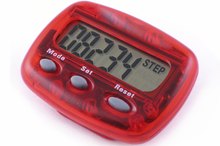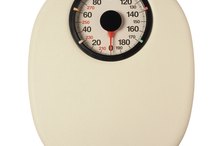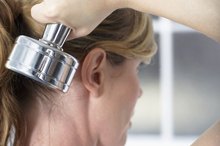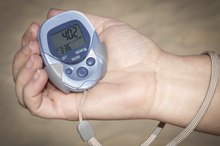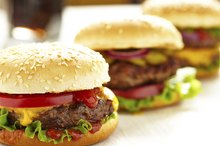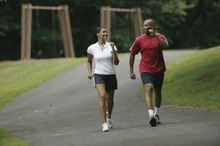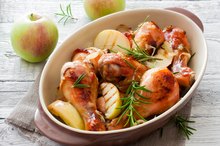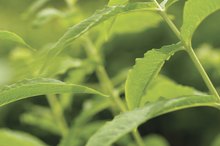Does Walking in the Morning and Evening Help You Burn Fat?
Burning fat is most likely an item on your to-do list. Walking in the morning and evening does burn fat if you walk at a brisk pace. You do not have to do all of your fat-burning exercise at once, so if you have time before breakfast and after dinner, enjoy a walk.
Burning Fat
Since walking is considered an aerobic exercise, it is a fat-burning activity. Fat is used as fuel when you exercise at a certain intensity level. During your workout, you should feel slightly breathless, but you should still be able to carry a conversation. If you can sing, your exercise level is too low. If you cannot talk, your intensity level is too high. Fortunately, you can easily adjust the intensity by simply speeding up or slowing down your walking pace.
- Since walking is considered an aerobic exercise, it is a fat-burning activity.
- If you can sing, your exercise level is too low.
Walking
How to Convert Steps to Calories Burned
Learn More
A walk in the morning and in the evening burns calories. When you briskly walk for at least 10 minutes, you elevate your heart rate, convert fat to fuel and are on your way to reducing your storage of fat. According to the American College of Sports Medicine, doing several 10-minute sessions of exercise throughout the day will lead to weight loss. The ACSM recommends a minimum duration of 150 minutes a week to improve your cardiovascular fitness. Aim for a longer duration for additional weight loss.
- A walk in the morning and in the evening burns calories.
- According to the American College of Sports Medicine, doing several 10-minute sessions of exercise throughout the day will lead to weight loss.
Calories
Each pound equals 3,500 calories. If you weigh 150 pounds and walk three miles per hour, you will burn approximately 225 calories in an hour. If you walk slightly faster, at four miles per hour, you will burn approximately 340 calories in an hour. The hour of walking does not have to be completed all at once. You can walk for 30 minutes in the morning and 30 minutes in the evening, for example, to burn fat and calories.
- Each pound equals 3,500 calories.
- If you walk slightly faster, at four miles per hour, you will burn approximately 340 calories in an hour.
Intervals
How Many Calories Per Day to Lose 1 Pound Per Week?
Learn More
As your fitness level improves, include intervals into your routine to burn more fat while walking. Begin your walk at a comfortable pace and then increase your speed to a speed-walk for one to two minutes. Then, reduce your speed for the same amount of time and then continue repeating the intervals throughout your workout. Another option is to walk uphill to increase the intensity of your exercise.
- As your fitness level improves, include intervals into your routine to burn more fat while walking.
Related Articles
References
- American College of Sports Medicine: ACSM Issues New Recommendations on Quantity and Quality of Exercise
- Walk Your Butt Off!: Go From Sedentary to Slim in 12 Weeks; Sara Lorge Butler
- American Council on Exercise: A Walk a Day
- Bairapareddy KC, Maiya AG, Kumar P, Nayak K, Guddattu V, Nayak V. Effect of aerobic exercise on echocardiographic epicardial adipose tissue thickness in overweight individuals. Diabetes Metab Syndr Obes. 2018;11:303-312. doi:10.2147/DMSO.S145862
- Schwarz M, Urhausen A, Schwarz L, Meyer T, Kindermann W. Cardiocirculatory and metabolic responses at different walking intensities. Br J Sports Med. 2006;40(1):64-7. doi:10.1136/bjsm.2005.020198
- Karstoft K, Winding K, Knudsen SH, et al. The effects of free-living interval-walking training on glycemic control, body composition, and physical fitness in type 2 diabetic patients: a randomized, controlled trial. Diabetes Care. 2013;36(2):228-36. doi:10.2337/dc12-0658
- Haight DJ, Lerner ZF, Board WJ, Browning RC. A comparison of slow, uphill and fast, level walking on lower extremity biomechanics and tibiofemoral joint loading in obese and nonobese adults. J Orthop Res. 2014;32(2):324-30. doi:https://doi.org/10.1002/jor.22497
- Hong HR, Jeong JO, Kong JY, et al. Effect of walking exercise on abdominal fat, insulin resistance and serum cytokines in obese women. J Exerc Nutrition Biochem. 2014;18(3):277-85. doi:10.5717/jenb.2014.18.3.277
Writer Bio
A mother of two and passionate fitness presenter, Lisa M. Wolfe had her first fitness article published in 2001. She is the author of six fitness books and holds an Associate of Arts in exercise science from Oakland Community College. When not writing, Wolfe is hula-hooping, kayaking, walking or cycling.
